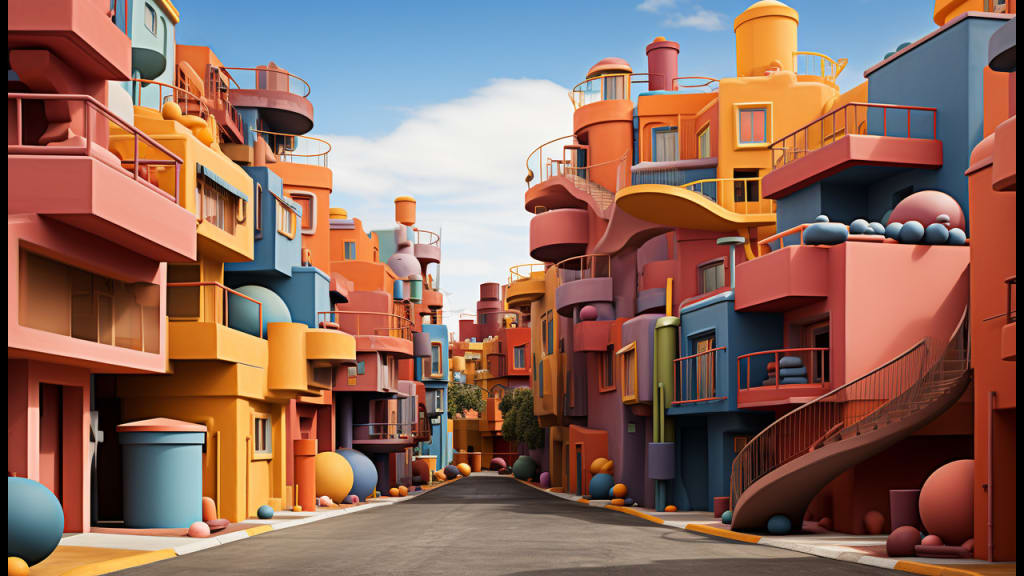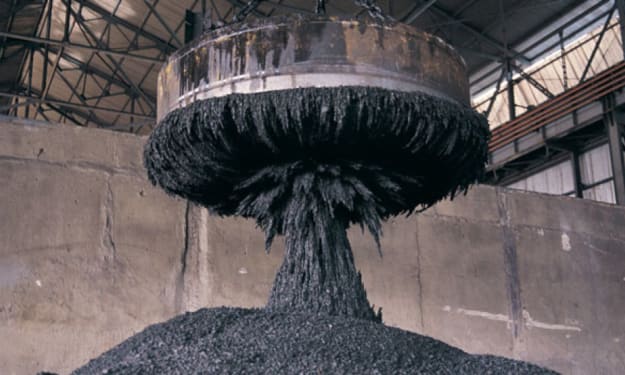Getting Buried in Concrete: Exploring the Building Blocks of Civilization
Solid Foundations of Civilization: Unearthing the Role of Concrete in Modern Construction

"I am about to get buried in concrete. And while that's happening, I'm going to explain everything you need to know about this substance."
Concrete is a ubiquitous material that shapes the modern world. From towering skyscrapers to intricate bridges, from roads that connect cities to the foundations of our homes, concrete is the backbone of our built environment. Yet, despite its prevalence, there's a lot to learn about this seemingly ordinary mixture of cement, aggregate, and water. In this article, we will delve deep into the world of concrete, exploring its components, its history, its chemistry, and its environmental impact.
Cement vs. Concrete: Clearing Up the Confusion
Before we dive into the intricacies of concrete, let's clarify a common misconception – the difference between cement and concrete. Cement is the binding agent, the glue that holds the aggregate together. Concrete, on the other hand, is the composite material formed when cement is mixed with aggregates like gravel and sand. This fundamental distinction is crucial to understanding how concrete works and its significance in construction.
Cement: The Glue that Holds it All Together
Cement is the most crucial ingredient in the concrete mixture. It acts as the matrix that binds the aggregates and provides the strength and stability that make concrete such a versatile building material. Every year, massive amounts of cement are produced worldwide – around 500 kilograms per person, making it one of the most consumed man-made substances after water. This tremendous demand underscores the vital role cement plays in our modern infrastructure.
The Ancient Origins of Concrete
Concrete is not a recent invention; its history dates back thousands of years. The ancient Romans, known for their engineering prowess, were pioneers in using concrete to create enduring structures. They discovered that adding volcanic ash called pozzolana to the mixture enhanced its strength and durability. The Roman Pantheon and underwater piers are some of the remarkable achievements that stand as a testament to the longevity of ancient concrete.
The Chemistry Behind Concrete
Understanding the chemistry of concrete sheds light on its remarkable properties. Cement is primarily composed of compounds like tricalcium silicate and calcium hydroxide. When water is introduced to the mixture, chemical reactions occur, leading to the formation of crystals that interlock and solidify the concrete. Contrary to common perception, water doesn't evaporate from concrete; it becomes an integral part of the hardened material, contributing to its strength.
The Strength of Concrete: Exploring Variations
Concrete's strength is influenced by various factors, including the proportions of its components and the presence of additives. Researchers have conducted tests to compare the strength of different concrete mixtures – pure cement, cement with sand, and traditional cement with sand and gravel. Surprisingly, the addition of aggregates enhances cohesion and durability, indicating that the interlocking nature of the crystals plays a vital role in concrete's resilience.
Modern Concrete and Environmental Impact
While concrete is undeniably essential for modern construction, its production has environmental implications. The process of making cement generates a significant amount of carbon dioxide emissions, contributing to climate change. Cement production accounts for about 8% of global carbon emissions, surpassing even the aviation industry. Recognizing this impact, efforts are being made to develop more sustainable concrete formulations and reduce its carbon footprint.
Concrete: A Window into History
One of the intriguing aspects of concrete is its origin in the remnants of ancient marine life. Limestone, a key ingredient in cement, is formed from the skeletons and shells of ancient sea organisms. This material, created millions of years ago, now forms the backbone of our modern cities. Every skyscraper, every bridge, and every road carries within it a connection to the oceans of the past.
A Unique Exploration: Being Buried in Concrete
In a daring experiment, the creator of the YouTube channel Veritasium, Derek Muller, embarked on a unique journey – being buried in concrete. This hands-on experience provided insights into the properties of concrete and its buoyancy, as well as the measures taken to prevent it from setting too quickly. Derek's experiment shed light on the complexity of working with concrete and the care required to ensure its optimal properties.
The Future of Concrete and Environmental Responsibility
As we move forward, the need for sustainable construction practices becomes more apparent. While concrete is indispensable, finding ways to reduce its environmental impact is crucial. Initiatives like Wren, which enable individuals to calculate their carbon footprint, offset emissions, and support carbon reduction projects, offer a path toward positive change. Balancing our reliance on concrete with a commitment to environmental responsibility is key to creating a more sustainable future.
In Conclusion
Concrete is more than just a building material; it's a testament to human innovation and creativity. From ancient Roman structures to cutting-edge skyscrapers, concrete has shaped our world in profound ways. Understanding its components, chemistry, and environmental impact can help us make informed choices about its use in construction. As we continue to build the cities of tomorrow, let's strive for a harmonious balance between progress and sustainability, ensuring that concrete remains a foundation for a brighter future.
About the Creator
Enjoyed the story? Support the Creator.
Subscribe for free to receive all their stories in your feed. You could also pledge your support or give them a one-off tip, letting them know you appreciate their work.





Comments
There are no comments for this story
Be the first to respond and start the conversation.